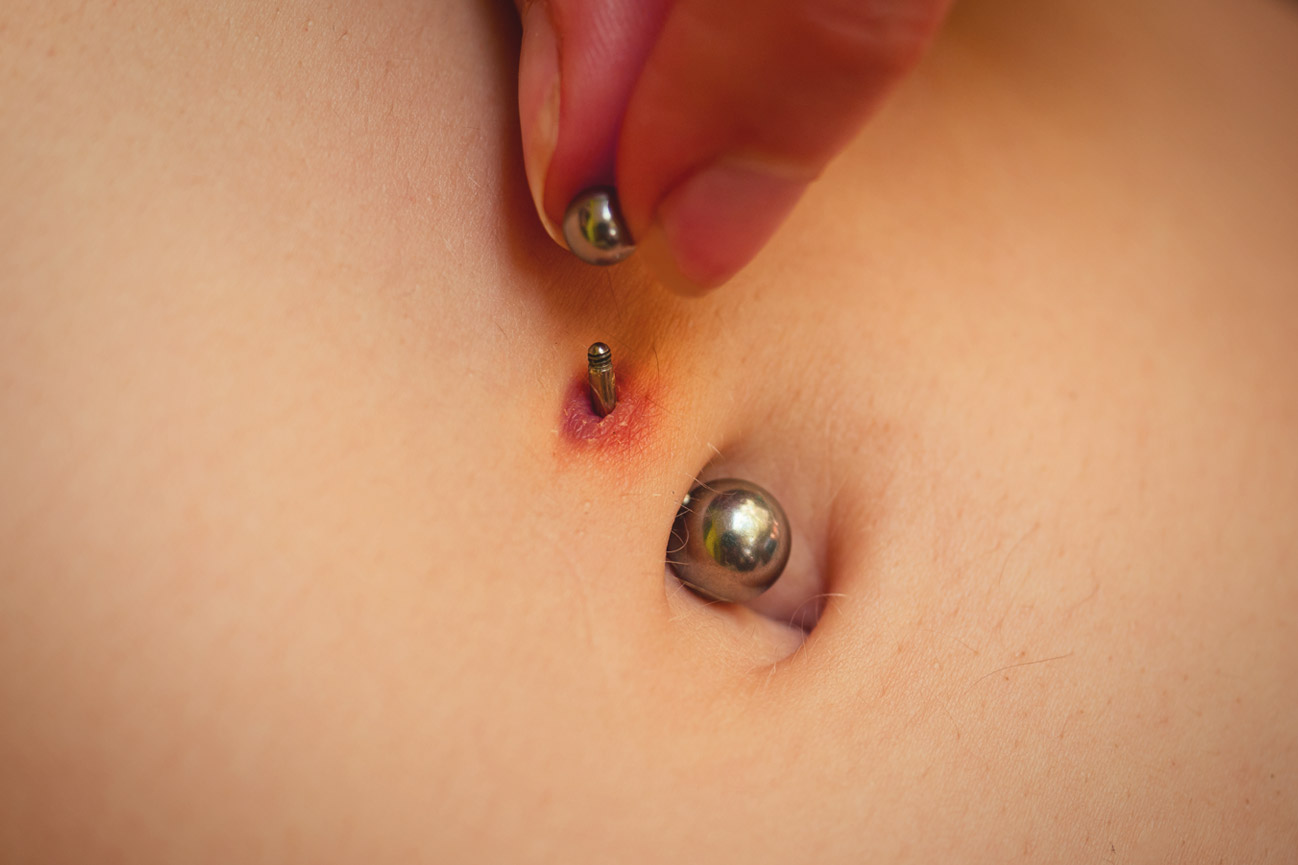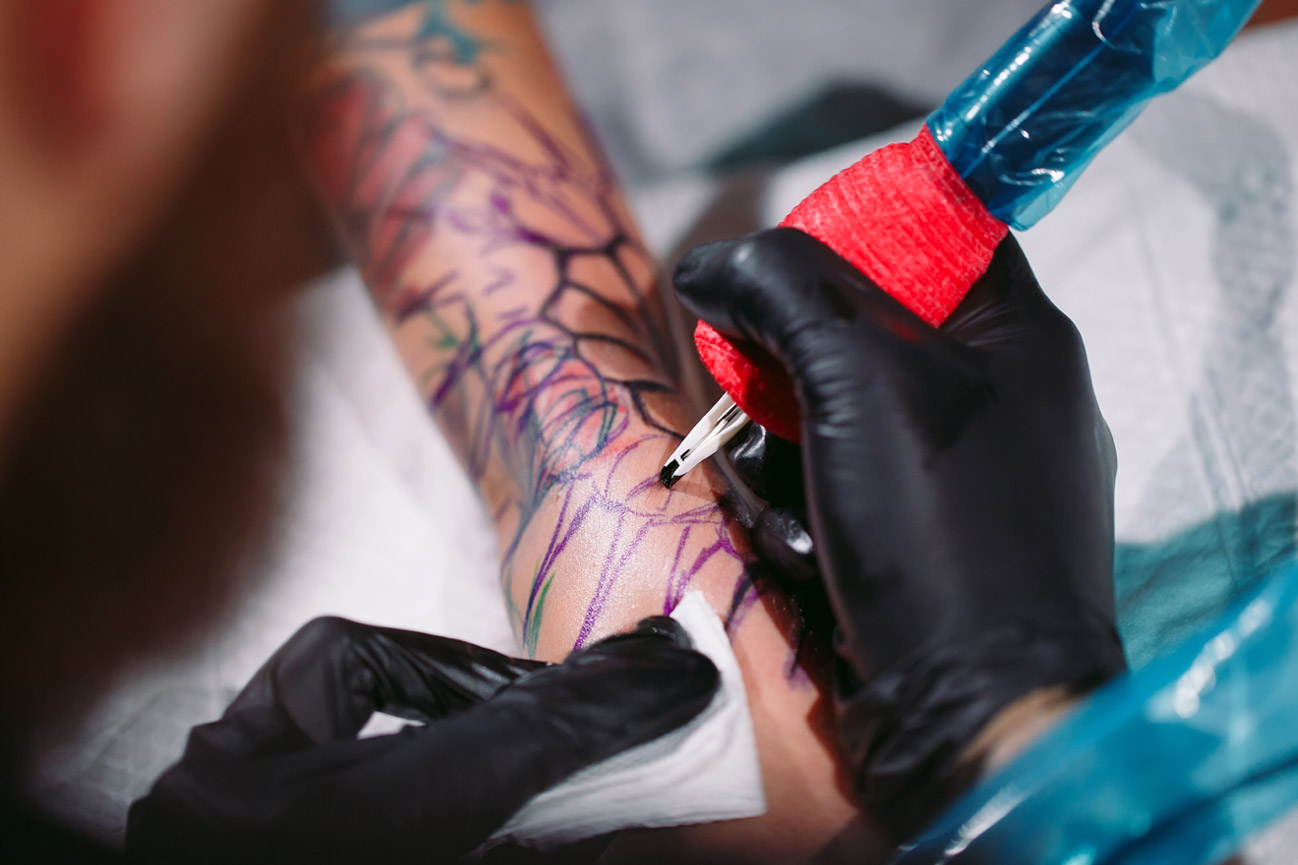Introduction to Piercing Won’t heal? The real reasons (and how to fix it)
You’ve cleaned it, cared for it, and resisted the urge to change the jewelry too early, but somehow your piercing still isn’t healing. It’s sore, tender, or maybe a little crusty months after you got it done. Don’t panic. It doesn’t always mean something’s wrong. Healing takes time, and sometimes your body just needs a little extra help.
Here’s what could be going on when a piercing won’t heal, and how to get it back on track.
How Long Piercings Actually Take to Heal
Every piercing has its own timeline, and cartilage piercings especially take their time. Some piercings close up fast, while others go through a few months of ups and downs before finally calming down. Even the same type of piercing can heal differently from person to person depending on skin type, health, and aftercare consistency.
- Earlobes: 6–8 weeks (fastest healers)
- Helix / Flat / Tragus / Conch: 6 months to a year
- Navel / Nose: 6–12 months
- Nipple / Surface / Dermal: up to a year or more
If your piercing still feels sore or tender a few months in, that doesn’t automatically mean it’s “not healing.” Some tissue types, especially cartilage, heal from the outside in. It can look fine long before it’s stable inside. You might have minimal redness and think you’re in the clear, but deep tissue healing is slower. That’s why even a piercing that looks perfect on the surface can still feel a little sensitive when you touch or move it.
Common Reasons a Piercing Won’t Heal
Even with perfect aftercare, piercings can be slow to settle. These are the main culprits our piercers see.
1. You’re Sleeping on It
Constant pressure is the biggest reason cartilage piercings stay irritated. Sleeping on the same side every night, wearing headphones, or brushing hair over the area can all keep the tissue inflamed. It doesn’t take much pressure to delay healing, even leaning your head on your hand while scrolling or wearing a beanie too tight can create constant friction that your body doesn’t like.
Fix it: Try a travel pillow or a donut pillow to avoid pressure while you sleep. Small habits make a big difference here.
2. The Jewelry Isn’t the Right Fit
If your jewelry is too tight, too thin, or made from low-quality metal, your body will fight it the entire healing process. Implant-grade titanium or 14k gold are best because they’re hypoallergenic and lightweight. Jewelry that’s too short can trap swelling and cause pressure bumps, while pieces that are too long can catch on hair or clothing.
Fix it: Check with your piercer to make sure the jewelry length and material are right for your anatomy and stage of healing. It might be as simple as switching to a longer post or higher-quality metal.
3. You Changed the Jewelry Too Early
We get it, you’re excited to style your new piercing. But swapping jewelry before the piercing channel fully forms can cause micro-tears and inflammation, restarting the healing process. Every time you move or twist a healing piercing, it delays progress.
Fix it: Wait until your piercer gives the go-ahead, and always have jewelry changed professionally during the first year. It’s the difference between a piercing that lasts and one that never seems to settle.
4. There’s an Irritation Bump or Scar Tissue Forming
A small bump doesn’t necessarily mean infection, but it does mean irritation. It could be caused by friction, poor fit, or cleaning too often. These bumps are usually surface-level reactions that happen as your body tries to protect itself.
Most people confuse these with keloids, but they’re not the same. Keloids are rare and extend beyond the piercing site, while irritation bumps are temporary and usually heal once the cause is addressed. Sometimes these bumps will shrink and disappear within a few weeks once the jewelry is adjusted or the cleaning routine is simplified.
Fix it: Leave it alone. Don’t pop or squeeze it. Keep your cleaning routine simple with sterile saline once or twice daily and let your body calm the inflammation naturally. If it sticks around, have your piercer take a look to see if the jewelry needs to be adjusted.
5. You’re Cleaning Too Much (or With the Wrong Products)
Alcohol, hydrogen peroxide, or harsh soaps will dry and damage healing tissue. Even saline sprays can backfire if you’re overdoing it. Over-cleaning strips away your skin’s natural barrier, which actually helps you heal.
Fix it: Clean gently twice a day with sterile saline or a piercing-specific spray and let it breathe. Your body knows what it’s doing, it just needs the right conditions to do it.
6. You Might Be Dealing with a Mild Allergy
Nickel sensitivity is common, even in small amounts. If your piercing constantly feels itchy or raw, you might be reacting to the jewelry metal. Some people can wear certain metals for years and only develop a reaction later, which makes it frustrating to diagnose.
At Platinum Ink, we only use implant-grade titanium jewelry because it’s hypoallergenic, lightweight, and completely nickel-free. Titanium is one of the safest materials you can wear in a healing or long-term piercing, and it’s trusted by professional piercers around the world. It won’t rust, corrode, or irritate sensitive skin, which is why it’s often used for medical implants too.
Fix it: If your piercing just won’t calm down, check what metal you’re wearing. Have your piercer inspect the jewelry and replace it with titanium if needed. Even if you’ve never reacted before, switching to a higher-quality material can make a huge difference in how your piercing feels and heals.
7. It Was Pierced at a Bad Angle or Depth
Sometimes, the problem isn’t your aftercare. It’s placement. If a piercing was set too shallow, crooked, or in tissue that moves too much, your body may treat it like a foreign object and reject it. Even with perfect aftercare, a piercing that wasn’t done at the right depth won’t ever settle comfortably.
Fix it: See a professional piercer for an evaluation. In some cases, it’s best to retire and re-pierce once the tissue has healed. It’s always worth getting a second opinion before giving up on it completely.
Signs It’s Irritated, Not Infected
It’s easy to assume soreness means infection, but that’s not always the case. A piercing that won’t heal often just needs less interference, not antibiotics. Learning to tell the difference between irritation and infection helps you avoid unnecessary panic and gives your piercing a better chance to recover naturally.
Irritation signs:
- Tenderness when touched
- Occasional clear crust
- Slight redness around the jewelry
- No major swelling or pus
Irritation often comes and goes depending on what you’re doing day to day. You might have a few good weeks followed by a random flare-up, especially with cartilage. That’s normal, as long as it gradually improves overall.
Infection signs:
- Hot, throbbing pain
- Yellow or green discharge
- Red streaking or spreading swelling
- Fever or feeling unwell
If you’re seeing the second list, it’s time for a doctor, not just saline spray. True infections are rare but serious, and catching them early helps prevent scarring or complications.
How to Help a Slow-Healing Piercing
Healing is half patience, half prevention. Here’s what our piercers recommend to support a piercing that’s taking its sweet time.
- Stick with sterile saline only, twice a day. Avoid homemade salt solutions, as the ratios are rarely right.
- Keep your hands off. The more you twist, spin, or touch it, the longer it takes to heal. Resist the urge to check it constantly.
- Avoid sleeping on it. Side sleepers, that travel pillow trick really works, and it keeps pressure off the area while you rest.
- Check your jewelry material. Use implant-grade titanium or solid gold, and make sure the fit isn’t too tight.
- Keep hair, makeup, and headphones away from the area to minimize friction and bacteria.
- Stay hydrated and get enough rest. Healthy skin heals faster, and even stress can slow things down more than you’d expect.
You can also support healing from the inside out by eating balanced meals, drinking water, and avoiding smoking, which constricts blood flow and delays recovery.
When to See a Professional
If you’ve been cleaning properly and your piercing still hurts, swells, or leaks after several months, come see a pro. A piercer can check placement, fit, and metal quality, and in some cases, a simple jewelry swap can make all the difference.
Never try to tough it out if something feels wrong. A reputable piercer can tell right away if your piercing just needs more time or if it’s time to make a change. Sometimes all it takes is a small adjustment or reassurance from someone who knows what to look for.
The Bottom Line
A piercing that won’t heal doesn’t always mean something’s gone wrong. Most of the time, it’s your body asking for a break, better jewelry, or a little patience. Keep your aftercare simple, stay consistent, and don’t hesitate to ask your piercer for advice.
Healing takes time, but once it’s calm and fully settled, it’s always worth the wait.
Why Experience Matters
A piercing that won’t heal can be frustrating, but the right piercer makes all the difference. At Platinum Ink, our team takes the time to make sure every piercing is done with precision, sterile technique, and top-quality materials from the start. We focus on anatomy-based placement, proper jewelry fit, and safe metals like implant-grade titanium so that your piercing has the best chance to heal smoothly and last for years.
Our piercers have worked with every ear shape, skin type, and jewelry style imaginable. First-timers and seasoned piercing lovers alike can count on a professional, comfortable, and fully personalized experience.
Walk-ins are always welcome at both our Austin studios, or you can book an appointment online to plan your next piece with one of our experts.



